

Johns Hopkins University (JHU) continues to pad its space community résumé with their interactive map, “The map of the observable Universe”, that takes viewers on a 13.7-billion-year-old tour of the cosmos from the present to the moments after the Big Bang. While JHU is responsible for creating the site, additional contributions were made by NASA, the European Space Agency, the National Science Foundation, and the Sloan Foundation.

Artist's concept of an inflatable airship cruising through the skies of Saturn's huge moon Titan. Aerospace firms Northrop Grumman and L'Garde have been developing a Venus-specific version of this vehicle called VAMP (short for Venus Atmospheric Maneuverable Platform). Credit: Northrop-Grumman - : See more
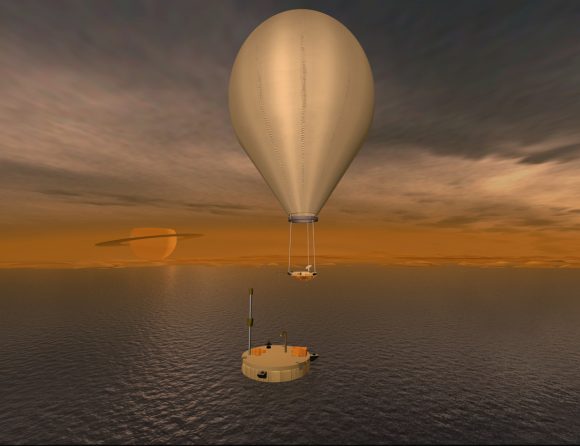
Artist’s concept of a Mongolfiere balloon and a deployable lander at Titan. Credit: NASA

Concept for a Titan Winged Aerobot, a hybrid balloon glider that does not require significant power either to stay aloft or to achieve lateral motion. Credit: Global Aerospace Corp/Northrup Grumman

Artist’s concept of the Titan Aerial Daughtercraft (TAD) flying above one of Titan’s methane lake. Credit: NASA

Artist’s concept of the Titan Aerial Daughter quadcopter and its “Mothercraft” balloon. Credit: NASA/STMD

The Aerial Vehicle for In-situ and Airborne Titan Reconnaissance (AVIATR) concept for an aerial explorer for Titan. Credit: Mike Malaska

A proposed eight-bladed drone (aka. "dragonfly") could be ideally suited for exploring Saturn's moon Titan in the coming decades. Credit: APL/Michael Carroll

Artist’s concept of the dragonfly being deployed to Titan and commencing its exploration mission. Credit: APL/Michael Carroll

In this illustration, the Dragonfly helicopter drone is descending to the surface of Titan. Image: NASA

Image: This illustration shows NASA’s Dragonfly rotorcraft-lander approaching a site on Saturn’s exotic moon, Titan. Taking advantage of Titan’s dense atmosphere and low gravity, Dragonfly will explore dozens of locations across the icy world, sampling and measuring the compositions of Titan’s organic surface materials to characterize the habitability of Titan’s environment and investigate the progression of prebiotic chemistry. Credit: NASA/JHU APL. Applied Physics Lab's (APL’s) Elizabeth ‘Zibi’ Tuttle is chief investigator for Dragonfly:
Click here NORDVPN: to get an exclusive deal, and stop rolling the dice with your data. Last Video: Why NASA is Obsessed With Asteroids • Why NASA is Obsessed With Asteroids ►Sign up for the weekly Space Race newsletter here: ►Become a member today: / @thespaceraceyt ►Support the channel by purchasing from our merch store: ► Join Our Discord Server: ► Patreon: Twitter: / thespaceraceyt For SpaceX related news, you can visit where we have a website and newsletter dedicated to everything about Tesla, SpaceX, Elon Musk, and more. Mars Colonization News and Updates • Mars Colonization News and Updates For SpaceX related news, you can visit where we have a website and newsletter dedicated to everything about Tesla, SpaceX, Elon Musk, and more. The Space Race is dedicated to the exploration of outer space and humans' mission to explore the universe. We’ll provide news and updates from everything in space, including the SpaceX and NASA mission to colonize Mars and the Moon. We’ll focus on news and updates from SpaceX, NASA, Starlink, Blue Origin, The James Webb Space Telescope and more. If you’re interested in space exploration, Mars colonization, and everything to do with space travel and the space race... you’ve come to the right channel! We love space and hope to inspire others to learn more! ► Subscribe to The Tesla Space newsletter: Business Email: #Spacex #Space #Mars
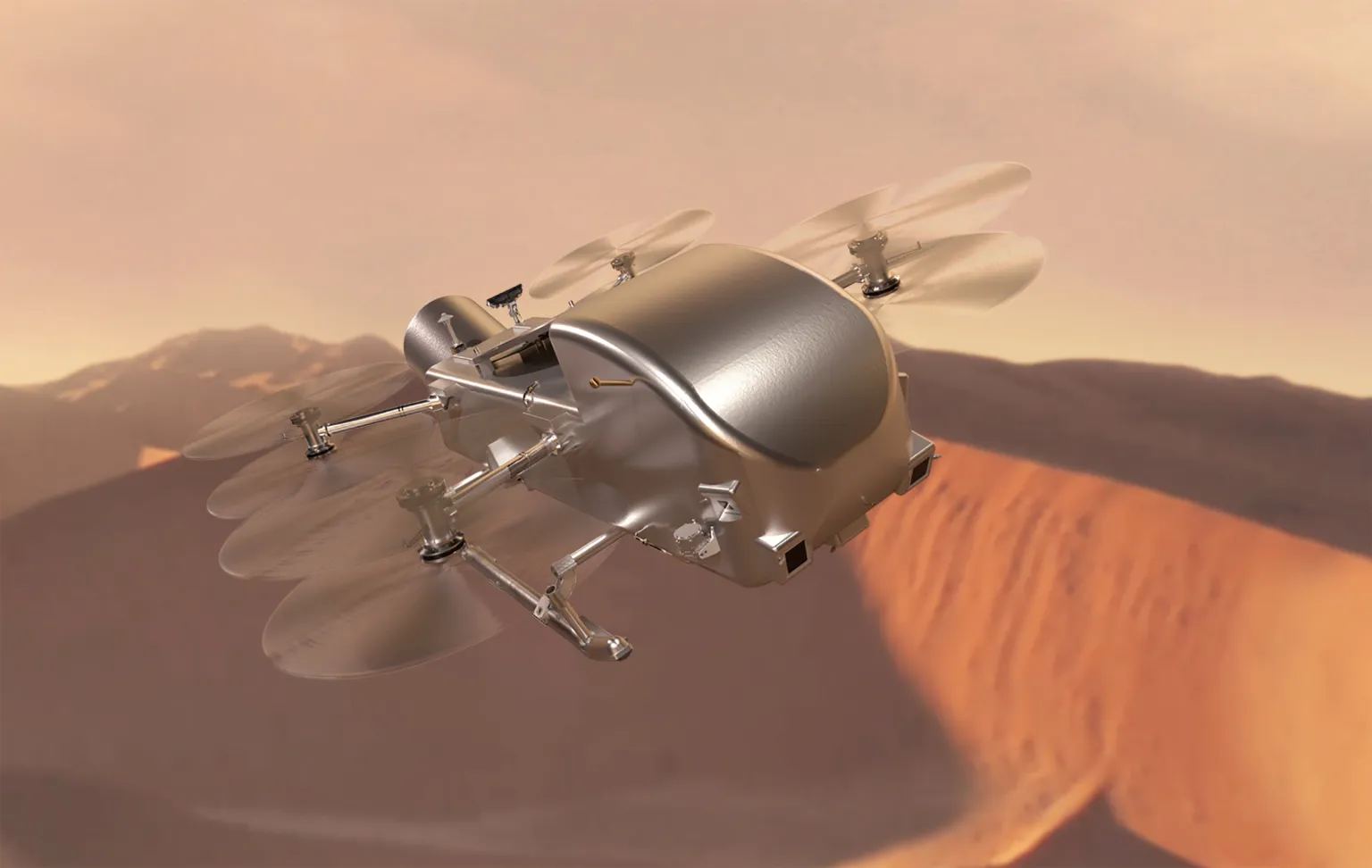
This artist's illustration shows NASA's Dragonfly octocopter in flight over Titan. Image Credit: NASA/Johns Hopkins APL/Steve Gribben
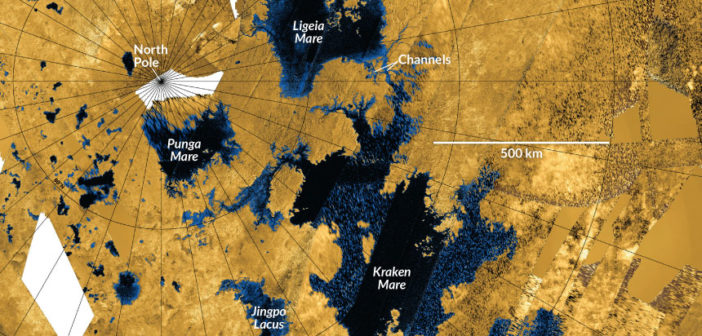
These images of Titan’s well-known hydrocarbon seas are from Cassini radar data. Image Credit: [JPL-CALTECH/NASA, ASI, USGS]

Dragonfly’s target is the Selk impact structure, near the edge of Shangri-La. Selk is a young impact crater about 90 km (56 mi) in diameter that features melt pools, sites where liquid water and organics could mix together to form amino acids or other biomolecules. Dragonfly will initially land at some dunes near the structure then begin exploring the region and its chemistry.
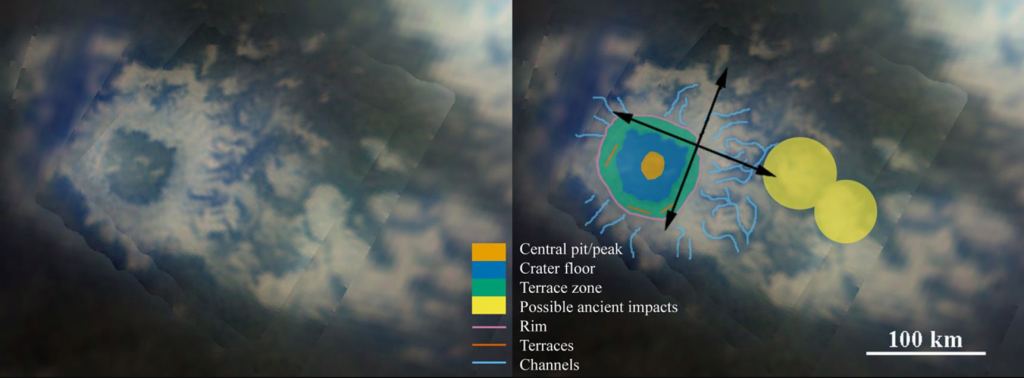
Thanks largely to Cassini and Huygens, researchers have made progress understanding Titan. In a 2020 paper, researchers examined two types of craters on the moon: dune craters and plains craters. Selk is a dune crater, and in the paper, researchers said that the dune craters are richer in organics than plains craters, and in fact are almost entirely composed of organics. However, Titan’s thick atmosphere makes it difficult to observe, and these findings stem from interpreting albedo and emissivity.
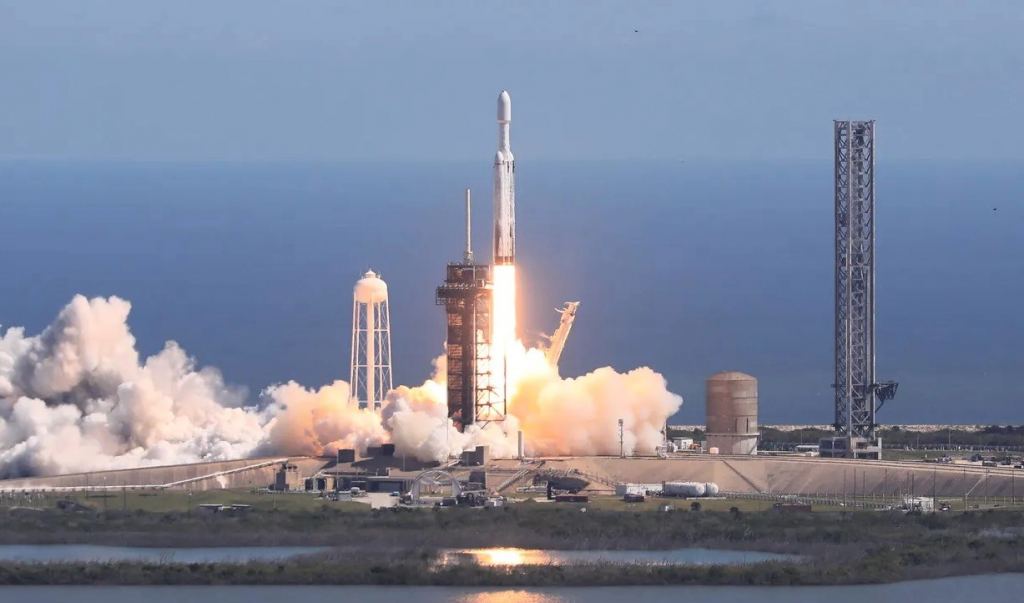
SpaceX’s Falcon Heavy rocket sends NASA’s Europa Clipper into space from its Florida launch pad. If all goes well, the Falcon Heavy will launch the Dragonfly mission to Titan in July, 2028. (NASA Photo / Kim Shiflett)